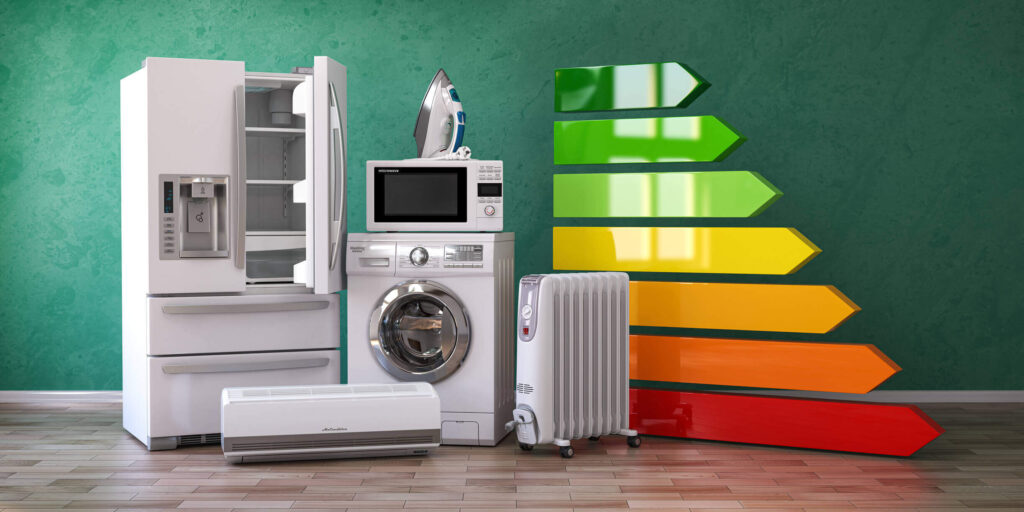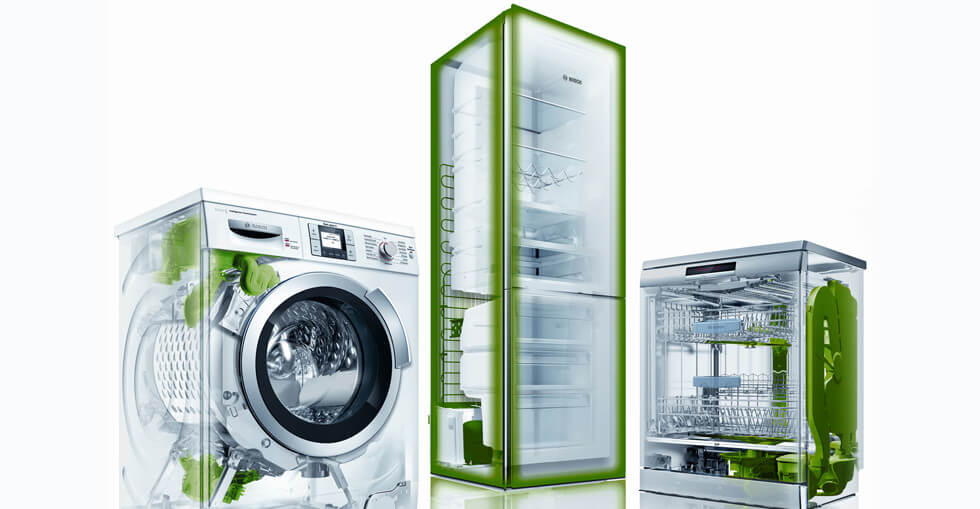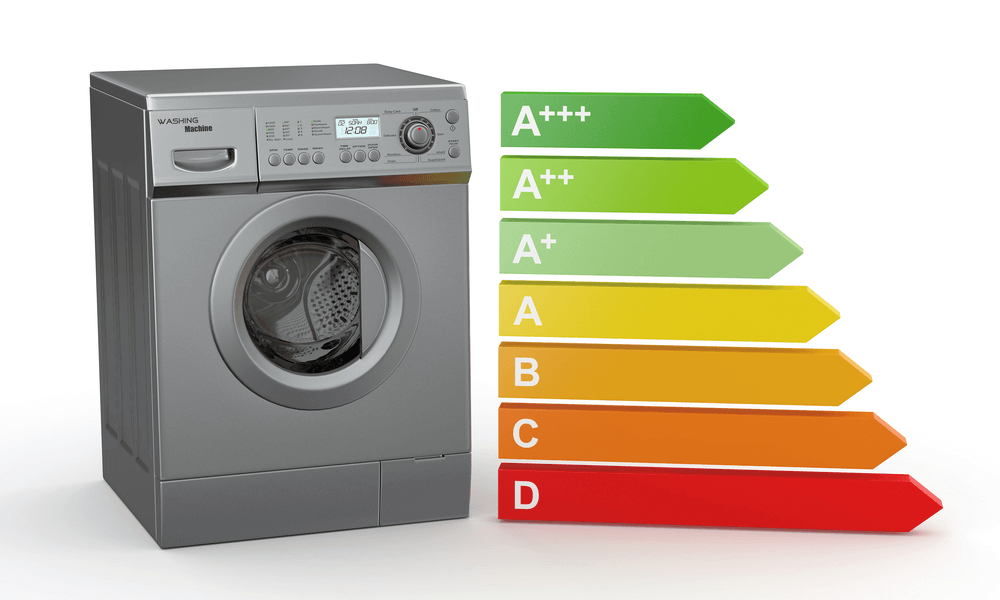
In today’s world, where the buzzword is sustainability, and every penny counts, finding ways to save energy and reduce your utility bills is more critical than ever. One of the most significant areas where energy consumption occurs in our homes is through our appliances. From refrigerators and washing machines to lights and electronics, these power-hungry devices can drain your wallet and put an unnecessary burden on the environment. In this comprehensive guide, we will explore a wide range of energy-saving tips to help you keep your appliances running efficiently and your energy bills under control. Let’s dive in and learn how to become an energy-saving pro!
Understanding Appliance Efficiency
Before we delve into specific tips, it’s essential to understand the concept of appliance efficiency. Efficiency is all about getting the most out of your appliances while using the least amount of energy. The more efficient your appliances are, the less they will cost you to operate. So, how can you boost the efficiency of your appliances? Let’s take a look:
- Opt for Energy Star Appliances: If you’re in the market for a new appliance, one of the first things you should look for is the Energy Star label. Products with this label have been certified to meet high energy efficiency standards set by the U.S. Environmental Protection Agency. Energy Star appliances use less energy, perform exceptionally well, and contribute to a greener planet. By investing in these appliances, you not only save money but also reduce your carbon footprint.
- Unplug Idle Gadgets: Do you leave your phone charger, laptop, or other gadgets plugged in when they’re not in use? These energy vampires silently sip electricity and contribute to your energy bill. To prevent this, make it a habit to unplug chargers and other devices when they’re not actively charging something. Alternatively, you can use power strips to easily disconnect multiple devices at once.
- Cook Smart: Let’s move to the kitchen, where we find some of the most energy-consuming appliances. When you’re cooking, use the right-sized pot or pan for the job. Placing a small pot on a large burner is inefficient and wastes energy. Similarly, don’t forget to use lids on your pots. This not only speeds up the cooking process but also retains heat, reducing energy consumption.
The Cool Truth About Refrigeration
Refrigerators and freezers are workhorses in our homes, but they can also be sneaky energy hogs. Let’s explore some ways to ensure they operate efficiently and economically:
- Keep It Cool, But Not Too Cool: Your refrigerator doesn’t need to be a polar ice cap. To maximize efficiency, set the temperature to the manufacturer’s recommended level, which is typically around 37°F (3°C) for the fridge and 0°F (-18°C) for the freezer. Any colder, and you’re unnecessarily using more energy.
- Organize Fridge Efficiently: Have you ever opened your fridge, only to stand there, staring at its contents, trying to figure out what you want? The longer the fridge door is open, the more cold air escapes, and the harder the appliance has to work to maintain the desired temperature. To avoid this, organize your fridge so that frequently used items are easily accessible. This minimizes the time the door remains open, thus conserving energy.
- Check Refrigerator Seals: A leaky refrigerator or freezer seal is like money slipping through your fingers. To check if your seals are intact, place a dollar bill in the door and then close it. If you can easily pull the bill out, it’s time to replace the seal. A tight seal ensures that your appliance maintains the right temperature, preventing energy waste.
Power-Hungry Laundry Appliances
Laundry day can be a real energy sucker. Your washing machine and dryer, in particular, can be major culprits when it comes to energy consumption. Here’s how to keep them in check:
- Go Cold for Washing: Did you know that approximately 90% of the energy used by your washing machine goes toward heating water? By switching to cold water for most of your laundry loads, you can save a significant amount of money and still get your clothes sparkling clean. Modern detergents are designed to work well in cold water, so there’s no compromise on cleanliness.
- Tumble with a Full Load: Your dryer works more efficiently with a full load, as it takes roughly the same amount of energy to dry a small load as a large one. Instead of running the dryer for multiple small loads, wait until you have a full load to maximize its efficiency. Additionally, don’t forget to clean the lint filter after every cycle. A clogged filter makes your dryer work harder and use more energy.
- Skip the Ironing: Here’s a tip to save both energy and time – hang your clothes right after they come out of the dryer. The residual heat will help smooth out wrinkles. By avoiding the power-hungry iron, you not only save on electricity but also simplify your laundry routine.
Lighting the Way to Savings
Lights, one of the most frequently used appliances in our homes, can be a major energy drain. Here’s how to keep those bulbs from burning through your budget:
- Go LED or CFL: Traditional incandescent bulbs are energy hogs and have a relatively short lifespan. On the other hand, LED (Light Emitting Diode) and CFL (Compact Fluorescent Lamp) bulbs use significantly less energy and can last up to 25 times longer. Although they may cost a bit more upfront, they pay for themselves through energy savings over time.
- Turn Off Lights: We’ve all been guilty of leaving lights on in empty rooms. Make it a habit to turn off lights when you leave a room, and you’ll see savings add up over time. Consider using motion sensors in rooms that are infrequently used. They automatically turn off lights when no motion is detected.
- Use Natural Light: Why not let the sun do its thing? Open your curtains during the day to let in natural light. It’s free, and it’ll instantly brighten your space without touching that light switch. This not only reduces energy consumption but also creates a more pleasant and inviting atmosphere.
Heating and Cooling – The Climate Control Conundrum

Heating and cooling your home is one of the most significant contributors to your energy expenses. Let’s explore ways to stay comfortable without breaking the bank:
- Embrace the Thermostat Dance: During the winter, try dropping your thermostat a degree or two lower and throw on a cozy sweater. Conversely, in the summer, raise the thermostat slightly and enjoy a chilled glass of lemonade. These small adjustments can lead to substantial savings over time. Investing in a programmable thermostat can also help automate these temperature changes, ensuring your home is comfortable when you need it to be and conserving energy when you don’t.
- Seal Drafts: If your home has drafts around doors and windows, you might as well be heating or cooling the great outdoors. Seal up those gaps and cracks to keep your climate-controlled air inside. Weatherstripping, caulk, and draft stoppers can be cost-effective solutions to eliminate these energy-wasting gaps.
- Maintain Your Systems: Regular maintenance for your HVAC (Heating, Ventilation, and Air Conditioning) system is like a spa day for your climate control. Change filters regularly, clean vents, and have a professional inspect your system annually to ensure it runs at peak efficiency. A well-maintained system operates more efficiently, uses less energy, and extends its lifespan.
The Electrifying Truth About Electronics

Your electronics and gadgets are part of everyday life, but they can gobble up energy like nobody’s business. Let’s explore some tips to keep them in check:
- Enable Power Management: Modern TVs, computers, and game consoles often have power-saving features. Enable these features to automatically switch to low-power mode when not in use or simply turn them off when you’re done. For computers, consider enabling sleep or hibernate mode when not in use. These settings can significantly reduce energy consumption while extending the life of your devices.
- Beware the Phantom Load: Electronic devices on standby mode still consume energy, a phenomenon known as the phantom load. Use power strips to easily switch off multiple devices with a single click when they’re not in use. This is especially effective for home entertainment systems where multiple components may be using energy in standby mode.
- Adjust Your Screen Brightness: Your smartphone and computer screen brightness settings are often set higher than necessary. Lowering the brightness not only conserves energy but also reduces eye strain, potentially extending the life of your device’s display. For many devices, you can set the brightness to automatically adjust based on ambient lighting conditions, striking a balance between visibility and energy savings.
Wrapping It Up – The Appliance Overhaul
Saving energy doesn’t mean you have to live in the dark and shiver in the cold. By making a few small changes and keeping an eye on your appliances, you can cut down your energy bills, reduce your carbon footprint, and contribute to a more sustainable future. Every little bit counts, and together, we can make a big difference. Here’s a quick summary of the key tips we’ve covered in this comprehensive guide:
| Tip | Estimated Savings |
| Use Energy Star Appliances | Up to 30% off bills |
| Unplug Idle Gadgets | About $100 per year |
| Optimize Fridge Temp | Up to $50 annually |
| Organize Fridge Efficiently | Minimize cold loss |
| Check Refrigerator Seals | Up to $50 annually |
| Cold Water Laundry | $30-40 per year |
| Full Load Dryer | $20-30 per year |
| Skip the Ironing | About $50 per year |
| LED or CFL Bulbs | Up to $80 per year |
| Turn Off Lights | About $75 annually |
| Use Natural Light | Reduce electricity use |
| Thermostat Adjustments | $100-150 per year |
| Seal Drafts | Up to $200 annually |
| HVAC Maintenance | Up to 15% on bills |
| Enable Power Management | $20-30 per year |
| Beware Phantom Load | About $100 annually |
| Adjust Screen Brightness | Reduce energy use |
Now that you have a wealth of knowledge on how to take control of your energy consumption, it’s time to put these tips into practice. Your wallet will thank you, and the planet will thank you. By making small changes in your daily routine and being mindful of your appliances, you can become an energy-saving pro. Happy savings!
Frequently Asked Questions (FAQs) – Energy-Saving Tips for Your Appliances
Here are some common questions and answers regarding energy-saving tips for your appliances to help you become a more energy-conscious and cost-effective household.
General Energy-Saving Tips
1. What is the significance of using energy-efficient appliances?
Energy-efficient appliances consume less electricity, which translates to lower energy bills and a reduced environmental impact. They are designed to perform the same tasks while using fewer resources.
2. Are there any financial incentives for using energy-efficient appliances?
Yes, some governments and utility companies offer rebates, tax credits, or other incentives for purchasing and using energy-efficient appliances. Check with your local utility provider or government to see if you’re eligible for any of these benefits.
3. How can I identify energy-efficient appliances?
Look for the Energy Star label. Products with this label meet high energy efficiency standards set by the U.S. Environmental Protection Agency. They are designed to consume less energy while delivering top-notch performance.
Refrigerator and Freezer Efficiency
4. What is the ideal temperature setting for my refrigerator and freezer?
For your refrigerator, set the temperature to around 37°F (3°C), and for your freezer, aim for approximately 0°F (-18°C). These settings ensure your food stays fresh without excessive energy consumption.
5. How often should I clean the coils and vents of my refrigerator?
It’s recommended to clean the coils and vents of your refrigerator at least once every six months. This prevents dust and debris from accumulating, which can reduce the appliance’s efficiency.
6. Can I safely store hot food in the refrigerator or freezer?
It’s best to allow hot food to cool down before placing it in your refrigerator or freezer. Hot items can raise the internal temperature, causing the appliance to work harder and consume more energy.
Laundry Appliance Efficiency
7. Why is washing with cold water more energy-efficient?
Washing with cold water reduces the energy required to heat the water, which accounts for a significant portion of a washing machine’s energy consumption. Modern detergents are formulated to work effectively in cold water.
8. What is the best way to maintain a front-loading washing machine’s efficiency?
To maintain a front-loading washing machine’s efficiency, make sure to clean the rubber door gasket, empty the drain filter regularly, and leave the door ajar after use to allow the drum to dry and prevent mold growth.
9. Is it better to use a dryer or air dry clothes to save energy?
Air drying clothes is the most energy-efficient option. If you prefer to use a dryer, consider using dryer balls or clean, dry towels to reduce drying time and energy consumption.
Lighting Efficiency
10. How much energy can I save by switching to LED or CFL bulbs?
Switching from incandescent bulbs to LED or CFL bulbs can save you up to 80% on your lighting energy costs. They also last significantly longer, reducing the frequency of bulb replacements.
11. Can I use LED bulbs in fixtures designed for incandescent bulbs?
In most cases, you can use LED bulbs in fixtures designed for incandescent bulbs. LED bulbs are available in various shapes and sizes to fit different fixtures. However, always check the packaging to ensure compatibility.
12. Are there energy-efficient options for outdoor and specialty lighting?
Yes, there are energy-efficient options for outdoor and specialty lighting. LED lights are available for various applications, including outdoor lighting, landscape lighting, and even decorative lighting for holidays and events.
Heating and Cooling Efficiency
13. How often should I replace my HVAC system’s air filter?
The frequency of air filter replacement depends on several factors, such as the type of filter, the number of occupants in your home, and the presence of pets. In general, it’s a good practice to check your filter monthly and replace it every three months or as recommended by the manufacturer.
14. Can I install a programmable thermostat in my home, and how does it save energy?
Yes, you can install a programmable thermostat. These devices allow you to schedule temperature adjustments throughout the day to match your activities. By reducing heating or cooling when it’s not needed, you can save energy and money.
15. How do I identify and seal drafts in my home?
To identify drafts, carefully inspect areas around doors, windows, and other openings. You can use weatherstripping, caulk, or draft stoppers to seal these gaps and prevent drafts. Look for drafts in attics, basements, and crawl spaces as well.
Electronics Efficiency
16. What is the “phantom load,” and how can I avoid it?
The “phantom load” refers to the energy consumed by electronic devices that are on standby or not in use but are still plugged in. You can avoid it by using power strips to disconnect multiple devices at once when they’re not in use or by unplugging individual devices.
17. Does lowering the screen brightness on my devices significantly save energy?
Yes, lowering the screen brightness on your devices can save energy. The display is one of the most power-hungry components of electronics. Reducing its brightness not only conserves energy but can also extend the life of your device’s display.